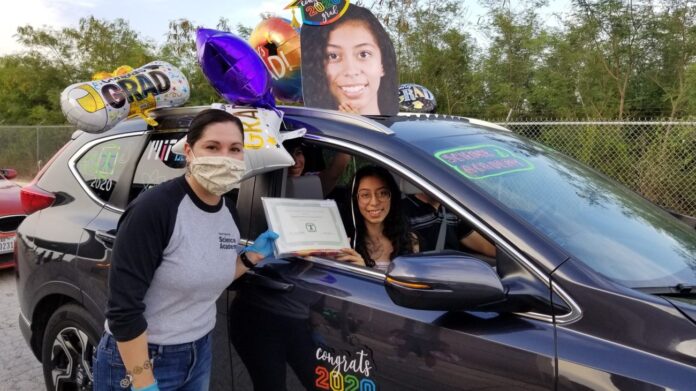Life in the time of corona requires a flexibility of thought and action unparalleled by common occurrences. South Texas Independent School District has embraced that concept with impressive results.
“ We actually started with what we call flexible learning the week after Spring Break,” said Amanda Odom, spokesperson for the district. STISD has an enrollment of about 4,200 students at six campuses from Olmito to Edinburg.
In fact, the district had already laid the groundwork before the pandemic as a matter of efficacy.
“ Really, the flexible learning and online learning was not something that was completely new for STISD,” Odom said. “Our district had used learning management and course management systems for years, so a lot of our instructors already knew how to use those types of systems to supply content online.”
Parallel to that activity was the familiarity of students with the mechanisms to access that material and submit their work online.
The STISD’s response to the unique and unexpected challenges of COVID-19 bears some similarities as well as differences to that of the Harlingen school district. In the early days of the pandemic, Harlingen administrators, educators and school board members mobilized in emergency meetings to develop school@home. This program created a way for students to continue their academics from home through virtual online learning by use of remote digital devices. The district also established points at which parents and students could pick up digital devices for use at home. Those without Internet access at home were given paper packets.
In contrast, STISD already had a system in place necessitated by the realities of the district, and only needed to expand that system in response to COVID-19. An example of this can be found at STISD World Scholars in Edinburg which enrolls about 600 students. Principal Efrain Garza described a student body spread across Hidalgo, Cameron and Willacy counties. Rather than provide paper packets, he and other educators found ways to ensure all students had access to online learning.
“ What was key to us was surveying our students and getting and finding out what their needs would be,” he said, “and we did.”
What he described next was an array of initiatives for students throughout the district. He and other faculty members even traveled to the homes of students who either lacked transportation or could not leave because of the lockdown.
“ In some cases we actually went all the way to Harlingen, Port Isabel in some cases, and as far away to the west as La Joya,” he said. “We actually delivered Internet devices and laptops or iPads. All of our students were able to get online, and we have these learning management systems.”
To be concise, World Scholars is not a community school and doesn’t function as such, nor do the other five campuses. The logistics of serving students in a broad range of environs compelled the district in times past to make arrangements which fit very well with current circumstances.
It has worked out “beautifully” as Garza so aptly put it.





